skip to main |
skip to sidebar
Born: July 23,1906
Died: February 27, 1931
Achievements: Involved in Kakori Train Robbery (1926), the attempt to blow up the Viceroy's train (1926), and the shooting of Saunders at Lahore (1928) to avenge the killing of Lala Lajpatrai; formed Hindustan Socialist Republican Association with fellow compatriots Bhagat Singh, Sukhdev, and Rajguru.
Chandrashekhar Azad was a great Indian freedom fighter. His fierce patriotism and courage inspired others of his generation to enter freedom struggle. Chandrasekhar Azad was the mentor Bhagat Singh, another great freedom fighter, and along with Bhagat Singh he is considered as one of the greatest revolutionaries that India has produced.
Chandra Shekhar Azad was born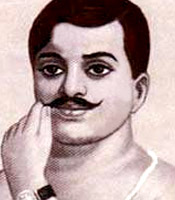 on July 23,1906 in village Bhavra in Jhabua district of Madhya Pradesh. His parents were Pandit Sitaram Tiwari and Jagarani Devi. He received his early schooling in Bhavra. For higher studies he went to the Sanskrit Pathashala at Varanasi. He was an ardent follower of Hanuman and once disguised himself as a priest in a hanuman temple to escape the dragnet of British police.
on July 23,1906 in village Bhavra in Jhabua district of Madhya Pradesh. His parents were Pandit Sitaram Tiwari and Jagarani Devi. He received his early schooling in Bhavra. For higher studies he went to the Sanskrit Pathashala at Varanasi. He was an ardent follower of Hanuman and once disguised himself as a priest in a hanuman temple to escape the dragnet of British police.
Chandrashekhar Azad was deeply troubled by the Jallianwala Bagh Massacre in Amritsar in 1919. In 1921, when Mahatma Gandhi launched Non-Cooperation movement, Chandrasekhar Azad actively participated in revolutionary activities. He received his first punishment at the age of fifteen. Chandra Shekhar was caught while indulging in revolutionary activities. When the magistrate asked him his name, he said "Azad" (meaning free). Chandrashekhar Azad was sentenced to fifteen lashes. With each stroke of the whip the young Chandrasekhar shouted "Bart Mata Kid Jai". From then on Chandrashekhar assumed the title of Azad and came to known as Chandrashekhar Azad. Chandrashekhar Azad vowed that he would never be arrested by the British police and would die as free man.
After the suspension of non-cooperation movement Chandrashekhar Azad was attracted towards more aggressive and revolutionary ideals. He committed himself to complete independence by any means. Chandrashekhar Azad and his compatriots would target British officials known for their oppressive actions against ordinary people and freedom fighters. Chandrashekhar Azad was involved in Kakori Train Robbery (1926), the attempt to blow up the Viceroy's train (1926), and the shooting of Saunders at Lahore (1928) to avenge the killing of Lala Lajpatrai.
Along with Bhagat Singh and other compatriots like Sukhdev and Rajguru, Chandrashekhar Azad formed the Hindustan Socialist Republican Association (HRSA). HRSA was committed to complete Indian independence and socialist principles for India's future progress.
Chandrashekhar Azad was a terror for British police. He was on their hit list and the British police badly wanted to capture him dead or alive. On February 27, 1931 Chandrashekhar Azad met two of his comrades at the Alfred Park Allah bad. He was betrayed by an informer who had informed the British police. The police surrounded the park and ordered Chandrashekhar Azad to surrender. Chandrashekhar Azad fought alone valiantly and killed three policemen. But finding himself surrounded and seeing no route for escape, Chandrashekhar Azad shot himself. Thus he kept his pledge of not being caught alive.
Born: April 14, 1891
Died: December 6, 1956
Achievements: Dr. B.R. Ambedkar was elected as the chairman of the drafting committee that was constituted by the Constituent Assembly to draft a constitution for the independent India; he was the first Law Minister of India; conferred Bharat Ratna in 1990.
Dr. B.R. Ambedkar is viewed as messiah of dalits and downtrodden in India. He was the chairman of the drafting committee that was constituted by the Constituent Assembly in 1947 to draft a constitution for the independent India. He played a seminal role in the framing of the constitution. Bhimrao Ambedkar was also the first Law Minister of India. For his yeoman service to the nation, B.R. Ambedkar was bestowed with Bharat Ratna in 1990.
Dr.Bhimrao Ambedkar was born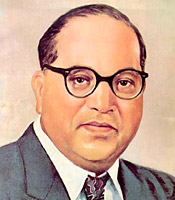 on April 14, 1891 in Mhow (presently in Madhya Pradesh). He was the fourteenth child of Ramji and Bhimabai Sakpal Ambavedkar. B.R. Ambedkar belonged to the "untouchable" Mahar Caste. His father and grandfather served in the British Army. In those days, the government ensured that all the army personnel and their children were educated and ran special schools for this purpose. This ensured good education for Bhimrao Ambedkar, which would have otherwise been denied to him by the virtue of his caste.
on April 14, 1891 in Mhow (presently in Madhya Pradesh). He was the fourteenth child of Ramji and Bhimabai Sakpal Ambavedkar. B.R. Ambedkar belonged to the "untouchable" Mahar Caste. His father and grandfather served in the British Army. In those days, the government ensured that all the army personnel and their children were educated and ran special schools for this purpose. This ensured good education for Bhimrao Ambedkar, which would have otherwise been denied to him by the virtue of his caste.
Bhimrao Ambedkar experienced caste discrimination right from the childhood. After his retirement, Bhimrao's father settled in Satara Maharashtra. Bhimrao was enrolled in the local school. Here, he had to sit on the floor in one corner in the classroom and teachers would not touch his notebooks. In spite of these hardships, Bhimrao continued his studies and passed his Matriculation examination from Bombay University with flying colours in 1908. Bhim Rao Ambedkar joined the Elphinstone College for further education. In 1912, he graduated in Political Science and Economics from Bombay University and got a job in Baroda.
In 1913, Bhimrao Ambedkar lost his father. In the same year Maharaja of Baroda awarded scholarship to Bhim Rao Ambedkar and sent him to America for further studies. Bhimrao reached New York in July 1913. For the first time in his life, Bhim Rao was not demeaned for being a Mahar. He immersed himself in the studies and attained a degree in Master of Arts and a Doctorate in Philosophy from Columbia University in 1916 for his thesis "National Dividend for India: A Historical and Analytical Study." From America, Dr.Ambedkar proceeded to London to study economics and political science. But the Baroda government terminated his scholarship and recalled him back.
The Maharaja of Baroda appointed Dr. Ambedkar as his political secretary. But no one would take orders from him because he was a Mahar. Bhimrao Ambedkar returned to Bombay in November 1917. With the help of Shahu Maharaj of Kolhapur, a sympathizer of the cause for the upliftment of the depressed classes, he started a fortnightly newspaper, the "Mooknayak" (Dumb Hero) on January 31, 1920. The Maharaja also convened many meetings and conferences of the "untouchables" which Bhimrao addressed. In September 1920, after accumulating sufficient funds, Ambedkar went back to London to complete his studies. He became a barrister and got a Doctorate in science.
After completing his studies in London, Ambedkar returned to India. In July 1924, he founded the Bahishkrit Hitkaraini Sabha (Outcastes Welfare Association). The aim of the Sabha was to uplift the downtrodden socially and politically and bring them to the level of the others in the Indian society. In 1927, he led the Mahad March at the Chowdar Tank at Colaba, near Bombay, to give the untouchables the right to draw water from the public tank where he burnt copies of the 'Manusmriti' publicly.
In 1929, Ambedkar made the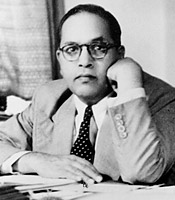 controversial decision to co-operate with the all-British Simon Commission which was to look into setting up a responsible Indian Government in India. The Congress decided to boycott the Commission and drafted its own version of a constitution for free India. The Congress version had no provisions for the depressed classes. Ambedkar became more skeptical of the Congress's commitment to safeguard the rights of the depressed classes.
controversial decision to co-operate with the all-British Simon Commission which was to look into setting up a responsible Indian Government in India. The Congress decided to boycott the Commission and drafted its own version of a constitution for free India. The Congress version had no provisions for the depressed classes. Ambedkar became more skeptical of the Congress's commitment to safeguard the rights of the depressed classes.
When a separate electorate was announced for the depressed classes under Ramsay McDonald 'Communal Award', Gandhiji went on a fast unto death against this decision. Leaders rushed to Dr. Ambedkar to drop his demand. On September 24, 1932, Dr. Ambedkar and Gandhiji reached an understanding, which became the famous Poona Pact. According to the pact the separate electorate demand was replaced with special concessions like reserved seats in the regional legislative assemblies and Central Council of States.
Dr. Ambedkar attended all the three Round Table Conferences in London and forcefully argued for the welfare of the "untouchables". Meanwhile, British Government decided to hold provincial elections in 1937. Dr. B.R. Ambedkar set up the "Independent Labor Party" in August 1936 to contest the elections in the Bombay province. He and many candidates of his party were elected to the Bombay Legislative Assembly.
In 1937, Dr. Ambedkar introduced a Bill to abolish the "khoti" system of land tenure in the Konkan region, the serfdom of agricultural tenants and the Mahar "watan" system of working for the Government as slaves. A clause of an agrarian bill referred to the depressed classes as "Harijans," or people of God. Bhimrao was strongly opposed to this title for the untouchables. He argued that if the "untouchables" were people of God then all others would be people of monsters. He was against any such reference. But the Indian National Congress succeeded in introducing the term Harijan. Ambedkar felt bitter that they could not have any say in what they were called.
In 1947, when India became independent, the first Prime Minister Pt. Jawaharlal Nehru, invited Dr. Bhimrao Ambedkar, who had been elected as a Member of the Constituent Assembly from Bengal, to join his Cabinet as a Law Minister. The Constituent Assembly entrusted the job of drafting the Constitution to a committee and Dr. Ambedkar was elected as Chairman of this Drafting Committee. In February 1948, Dr. Ambedkar presented the Draft Constitution before the people of India; it was adopted on November 26, 1949.
In October 1948, Dr. Ambedkar submitted the Hindu Code Bill to the Constituent Assembly in an attempt to codify the Hindu law. The Bill caused great divisions even in the Congress party. Consideration for the bill was postponed to September 1951. When the Bill was taken up it was truncated. A dejected Ambedkar relinquished his position as Law Minister.
On May 24, 1956, on the occasion of Buddha Jayanti, he declared in Bombay, that he would adopt Buddhism in October. On 0ctober 14, 1956 he embraced Buddhism along with many of his followers. On December 6, 1956, Baba Saheb Dr. B.R. Ambedkar died peacefully in his sleep.
Born: August 15, 1872
Died: December 5, 1950
Achievements: He was a freedom fighter, poet, scholar, yogi and philosopher. Worked towards the cause of India’s freedom, and for further evolution of life on earth.
Aurobindo Ghose was a multifaceted person. He was a freedom fighter, poet, scholar, yogi and philosopher. He spent his life working towards the cause of India’s freedom, and for further evolution of life on earth.
Sri Aurobindo Ghosh was born on August 15, 1872 at Calcutta. His father was Krishnadhan and his mother was Swamalata. Aurobindo Ghose had an impressive lineage. Raj Narayan Bose, an acknowledged leader in Bengali literature, and the grandfather of Indian nationalism was Sri Aurobindo’s maternal grandfather. Aurobindo Ghosh owes not only his rich spiritual nature, but even his very superior literary capacity, to his mother’s line. His father was an M.D. from England.
When Sri Aurobindo was five years old,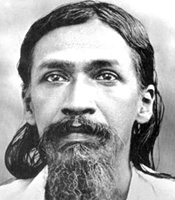 he was sent to Loretto Convent School at Darjeeling. Two years later in 1879, Aurobindo Ghose, was sent to England along with his brothers for higher studies. Aurobindo completed his schooling from St. Paul's in London. In 1890, at the age of eighteen, Sri Aurobindo got admission into Cambridge. Here, he distinguished himself as a student of European classics. To comply with the wish of his father, Sri Aurobindo Ghose also applied for the ICS while at Cambridge. He passed the Indian Civil Service Examination with great credit in 1890. He, however, failed to stand the required test in horsemanship and hence was not allowed to enter the Covenantal Service of the Indian Government.
he was sent to Loretto Convent School at Darjeeling. Two years later in 1879, Aurobindo Ghose, was sent to England along with his brothers for higher studies. Aurobindo completed his schooling from St. Paul's in London. In 1890, at the age of eighteen, Sri Aurobindo got admission into Cambridge. Here, he distinguished himself as a student of European classics. To comply with the wish of his father, Sri Aurobindo Ghose also applied for the ICS while at Cambridge. He passed the Indian Civil Service Examination with great credit in 1890. He, however, failed to stand the required test in horsemanship and hence was not allowed to enter the Covenantal Service of the Indian Government.
In 1893, Aurobindo Ghose, returned to India, and became the Vice-principal of the State college in Baroda. He drew a salary of Rs.750/-. He was held in great respect by the Maharaja of Baroda. Aurobindo was an accomplished scholar in Greek and Latin. From 1893 to 1906 he extensively studied Sanskrit, Bengali literature, Philosophy and Political Science.
In 1906, in the wake of partition of Bengal, resigned his job and joined the Bengal National College on a salary of Rs.150/-. He plunged headlong into the revolutionary movement. Aurobindo Ghose played a leading role in India’s freedom struggle from 1908. Sri Aurobindo Ghosh was one of the pioneers of political awakening in India. He edited the English daily Bande Mataram and wrote fearless and pointed editorials. He openly advocated the boycott of British goods, British courts and everything British. He asked the people to prepare themselves for passive resistance.
The famous Alipore Bomb Case proved to be a turning point in Sri Aurobindo Ghosh’s life. For a year Aurobindo was an undertrial prisoner in solitary confinement in the Alipore Central Jail. It was in a dingy cell of the Alipore Jail that he dreamt the dream of his future life, the divine mission ordained for him by God. He utilized this period of incarceration for an intense study and practice of the teachings of the Bhagavad Gita. Chittaranjan Das defended Sri Aurobindo, who was acquitted after a memorable trial.
During his time in prison, Aurobindo Ghosh, had developed interest in yoga and meditation. After his release he started practicing pranayama and meditation. Sri Aurobindo Ghose migrated from Calcutta to Pondicherry in 1910. At Pondicherry, he stayed at a friend’s place. At first, he lived there with four or five companions. Gradually the number of members increased and an Ashram was founded.
In 1914 after four years of concentrated yoga at Pondicherry, Sri Aurobindo launched Arya, a 64 page monthly review. For the next six and a half years this became the vehicle for most of his most important writings, which appeared in serialised form. These included Essays on The Gita, The Secret of The Veda, Hymns to the Mystic Fire, The Upanishads, The Foundations of Indian Culture, War and Self-determination, The Human Cycle, The Ideal of Human Unity, and The Future Poetry. In 1926, Sri Aurobindo Ghose retired from public life.
concentrated yoga at Pondicherry, Sri Aurobindo launched Arya, a 64 page monthly review. For the next six and a half years this became the vehicle for most of his most important writings, which appeared in serialised form. These included Essays on The Gita, The Secret of The Veda, Hymns to the Mystic Fire, The Upanishads, The Foundations of Indian Culture, War and Self-determination, The Human Cycle, The Ideal of Human Unity, and The Future Poetry. In 1926, Sri Aurobindo Ghose retired from public life.
Sri Aurobindo’s philosophy is based on facts, experience and personal realisations and on having the vision of a seer or Rishi. Aurobindo’s spirituality was inseparably united with reason. The goal of Sri Aurobindo was not merely the liberation of the individual from the chain that fetters him and realization of the self, but to work out the will of the Divine in the world, to effect a spiritual transformation and to bring down the divine nature and a divine life into the mental, vital and physical nature and life of humanity.
Sri Aurobindo passed away on December 5, 1950 at Pondicherry at the age of 78.
Born: July 16, 1908
Died: July 29, 1996
Achievements: Aruna Asaf Ali played a leading role during Quit India Movement; elected as Delhi’s first Mayor; awarded the Lenin Prize for peace in 1975 and the Jawahar Lal Nehru award for International understanding for 1991; honored with Bharat Ratna in 1998.
Aruna Asaf Ali was a legendary heroine of India's freedom struggle. Her moment of reckoning came in 1942 during Quit India Movement and she rose to the occasion. She unfurled the national flag at the Gowalia Tank maidan to signify the commencement of the Quit India Movement and became a legend for thousands of youth that rose to emulate her.
Aruna Asaf Ali was born as Aruna Ganguly on July 16 1908 at Kalka (Haryana) in an orthodox Hindu Bengali family. She was educated at Sacred Heart Convent in Lahore, and then in Nainital. After graduating from school, she taught at the Gokhale Memorial School in Calcutta. In Allahabad, she met her future husband, Asaf Ali,a prominent Congressman who was 23 years older than her. They were married in 1928 against parental opposition on the grounds of both religion and age.
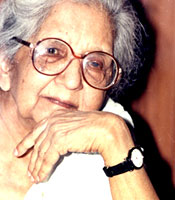 As Asaf Ali was deeply involved with freedom struggle, after marriage Aruna Asaf Ali too plunged into it. Her first major political action was during the Salt Satyagraha in 1930 when she addressed public meetings and led processions. British Government charged her for being a “vagrant” and sentenced her to one year’s imprisonment. When political prisoners were released in the aftermath of Gandhi-Irwin pact, Aruna was not released. But a public agitation in favour of her release forced British government to release her.
As Asaf Ali was deeply involved with freedom struggle, after marriage Aruna Asaf Ali too plunged into it. Her first major political action was during the Salt Satyagraha in 1930 when she addressed public meetings and led processions. British Government charged her for being a “vagrant” and sentenced her to one year’s imprisonment. When political prisoners were released in the aftermath of Gandhi-Irwin pact, Aruna was not released. But a public agitation in favour of her release forced British government to release her.
She was arrested again in 1932 and put in Tihar Jail. In Tihar Jail she went on a hunger strike against the treatment meted out to political prisoners. Her protest caused an improvement in conditions, but she herself was moved to solitary confinement in Ambala. After her release, she dropped out of the national movement for 10 years.
In 1942 she attended the Bombay Congress Session with her husband, where the historic Quit India resolution was passed on 8th August. When the Congress leaders were arrested on the day after this resolution was passed, Aruna presided over the flag-hoisting ceremony at Gowalia Tank Maidan in Bombay. She provided the spark that ignited the movement. She became a full-time activist in the Quit India movement and went underground to evade arrest. Her property was seized by the Government and sold. The Government also announced Rs. 5000 reward for her capture. Meanwhile, she fell ill and on hearing this Gandhiji advised her to surrender. However, Aruna Asaf Ali surrendered herself only when the warrants against her were cancelled on 26th January 1946.
At the time of independence Aruna Asaf Ali was a member of the Congress Socialist Party, which until then had been part of the Congress framework. In 1948, however, the socialists, including Aruna, formed a socialist party of their own. In 1955 this group merged with Communist Party of India and she became a member of its Central committee and a Vice President of the All India Trade Union Congress. In 1958 she left the Communist Party of India and was elected Delhi's first Mayor. she rejoined the Congress party in 1964 but ceased to play any active part in politics. She was awarded the Lenin Prize for peace in 1975 and the Jawahar Lal Nehru award for International understanding for 1991. Aruna Asaf Ali died on died July 29 1996. She was awarded India's highest civilian award, the Bharat Ratna, and was honoured with a stamp issued by the Indian Postal Service in 1998.
Kasturba Gandhi was born to a prosperous businessman Gokuladas Makharji of Porbandar on April 11, 1869. She got married to Mohandas Gandhi, when she was just thirteen years old. At the time of her marriage, Kasturba was an absolute illiterate. Gandhi taught her how to read and write. When her husband left for London for pursuing further studies, she remained in India for upbringing their newly born son Harilal. The couple had three more sons. Well, in this article, we will present you with the biography of Kasturba Gandhi.
In the year 1906, Mohandas Gandhi made up his mind to practice Brahmacharya. Like a good wife, Kasturba always stood by the side of her husband, even if she didn't approve of some of his ideas. Kasturba was very religious minded. She broke the barriers that created caste distinction and lived in ashrams. She always supported her husband in the political protests. She went along with her husband to South Africa in the year 1897. To know the complete life history of Kasturba Gandhi, read on.
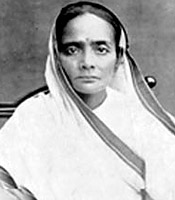 From the period between 1904 and 1914, she was actively involved in the Phoenix Settlement near Durban. In the year 1913, she raised her voice against the inhuman working conditions of Indians in South Africa. Infact, she was imprisoned for three months and that too in the jail, where the prisoners were made to do hard labor. In 1915, she accompanied her husband and supported the Indigo planters. There, she taught women and children about basic concepts like personal hygiene, discipline etc.
From the period between 1904 and 1914, she was actively involved in the Phoenix Settlement near Durban. In the year 1913, she raised her voice against the inhuman working conditions of Indians in South Africa. Infact, she was imprisoned for three months and that too in the jail, where the prisoners were made to do hard labor. In 1915, she accompanied her husband and supported the Indigo planters. There, she taught women and children about basic concepts like personal hygiene, discipline etc.
Kasturba Gandhi suffered from the problem of chronic Bronchitis. To top it, the stress level caused during the Quit India Movement's arrests aggravated her illness. Her health began to decline. The situation got worse, when she got victimized by pneumonia. Her husband disagreed with her idea to go in for penicillin. On February 22, 1944, she had a major heart attack and she died.
Born - 15 July 1903
Died - 2 October 1975
Achievements - K. Kamaraj played a crucial role in the appointment of India's two Prime Ministers - Lal Bahadur Shastri in the year 1964 and Indira Gandhi in the year 1966. All throughout his reign as chief minister of Tamil Nadu, K. Kamaraj strived to provide free meals and education to people. This was for the first time in the world that a measure like this was being executed in 1957.
Kumaraswami Kamaraj, who is better remembered as K. Kamaraj, was a powerful Indian politician. He was regarded as the 'kingmaker' in Indian politics and was widely respected for his traits of honesty, integrity and simplicity. During the struggle for India's independence from the British rule, Kamaraj was a close friend of Pundit Jawaharlal Nehru, who was later appointed as the first prime minister of the country. Read this biography further to learn more about K. Kamaraj.
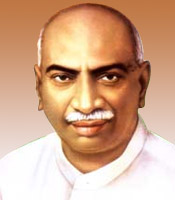 Kamaraj was called kingmaker because he played a crucial role in the appointment of India's two Prime Ministers - Lal Bahadur Shastri in the year 1964 and again Indira Gandhi in the year 1966. Thus, people fondly called him the Gandhi of South India or even the Black Gandhi. In his hometown Tamil Nadu, the denizens still credit him for spreading education facility to the thousands under the poverty line.
Kamaraj was called kingmaker because he played a crucial role in the appointment of India's two Prime Ministers - Lal Bahadur Shastri in the year 1964 and again Indira Gandhi in the year 1966. Thus, people fondly called him the Gandhi of South India or even the Black Gandhi. In his hometown Tamil Nadu, the denizens still credit him for spreading education facility to the thousands under the poverty line.
All throughout the reign of K. Kamaraj in Tamil Nadu, he strived to provide free meals and education to people. And this was for the first time in the world that a measure like this was being executed by K. Kamaraj in 1957. Due to his selfless service for the good of the poor and the downtrodden in the society, the Government of India awarded him with the Bharat Ratna, posthumously in the year 1976.
Though K. Kamaraj's nurtured an interest in politics since childhood, it was at the age of 16 that he joined the Indian National Congress as a full time worker. His task was to invite speakers, make arrangements for meetings and collect funds for the Congress party. In the year 1030, Kamaraj also participated in a rally to Vedaranyam spearheaded by C. Rajagopalachari as a part of the salt Satyagraha. There were many occasions when Kumaraswami Kamaraj was put behind the bars during the struggle for India's independence.
Born: May 6, 1861
Died: February 6, 1931
Achievements: Elected as Congress President twice; formed Swaraj Party and was Leader of the Opposition in the Central Legislative Assembly; prepared a draft Constitution for India.
Motilal Nehru was a doyen of Indian freedom struggle. He was the patriarch of what later became modern India's most powerful political dynasty. He was one of the most brilliant lawyers of the pre-independence India. He was elected as Congress President twice and is famous as the father of India's first prime minister Jawaharlal Nehru. He was affectionately called as Pandit Motilal Nehru.
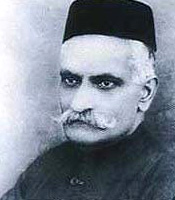 Motilal Nehru was born on May 6, 1861 in Delhi in a Kashmiri brahmin family. His father was Gangadhar and his mother was Jeevarani. Motilal Nehru's father died before Motilal was born. Moti Lal Nehru was brought up by his elder brother Nandalal who was a junior lawyer in Allahabad.
Motilal Nehru was born on May 6, 1861 in Delhi in a Kashmiri brahmin family. His father was Gangadhar and his mother was Jeevarani. Motilal Nehru's father died before Motilal was born. Moti Lal Nehru was brought up by his elder brother Nandalal who was a junior lawyer in Allahabad.
Motilal Nehru became one of the first generation of young Indians to receive 'Western-style' college education. He attended Muir College at Agra, but failed to appear for the final year B.A examinations. He then decided to join legal profession and appeared for law examination. Motilal Nehru secured first place in law examination and started his practice as lawyer in Kanpur in 1883.
Later Motilal Nehru settled in Allahabad and earned a mark for himself as one of the best lawyers of the country. He used to earns in lakhs every month and lived with great splendor and pomp. He bought a large family home in the Civil Lines of Allahabad and christened it as Anand Bhavan. He frequently visited Europe and adopted Western lifestyle. In 1909 he reached the pinnacle of his legal career by gaining the approval to appear in the Privy Council of Great Britain. In 1910, Motilal contested the election to the Legislative Assembly of the United Provinces and won.
The arrival of Mahatma Gandhi on Indian political scene transformed Motilal Nehru. Jalianwala Bagh massacre in Amritsar in 1919 shattered his faith in British rule and he decided to enter freedom struggle. The British government appointed a Commission to inquire into the Jalianwala Bagh incident. The Congress boycotted this commission. It appointed its own Inquiry Committee. Mahatma Gandhi, Motilal Nehru, Chittranjan Das were among its members. Following Mahatma Gandhi's call for Non Cooperation movement, he gave up his legal practice. He also shunned his luxurious lifestyle, gave away his Western clothes and articles and started wearing khadi.
Motilal Nehru was elected as Congress President in 1919 and 1920. In 1923, he founded the Swaraj party along with Deshbandhu Chittranjan Das. The object of the Swaraj Part was to enter the Legislative Assembly as elected members to oppose the government. Motilal Nehru first became the Secretary and later the President of Swaraj party. He became the Leader of the Opposition in the Central Legislative Assembly and vociferously opposed 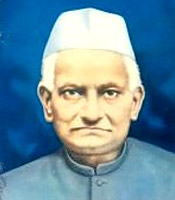 and exposed the decisions of the government.
and exposed the decisions of the government.
When the Simon Commission was appointed in 1927, Motilal Nehru was asked to draw up a draft constitution for free India. The constitution, drawn up by him, proposed Dominion status for India. The radical wing of the Congress led by Jawaharlal Nehru, and Subash Chandra Bose opposed Dominion status and favoured full freedom.
Motilal Nehru was arrested in 1930, in the wake of Civil Disobedience Movement. He was released in 1931, in view of his deteriorating health. Motilal Nehru passed away on February 6, 1931 in Lucknow.
 on July 23,1906 in village Bhavra in Jhabua district of Madhya Pradesh. His parents were Pandit Sitaram Tiwari and Jagarani Devi. He received his early schooling in Bhavra. For higher studies he went to the Sanskrit Pathashala at Varanasi. He was an ardent follower of Hanuman and once disguised himself as a priest in a hanuman temple to escape the dragnet of British police.
on July 23,1906 in village Bhavra in Jhabua district of Madhya Pradesh. His parents were Pandit Sitaram Tiwari and Jagarani Devi. He received his early schooling in Bhavra. For higher studies he went to the Sanskrit Pathashala at Varanasi. He was an ardent follower of Hanuman and once disguised himself as a priest in a hanuman temple to escape the dragnet of British police.









